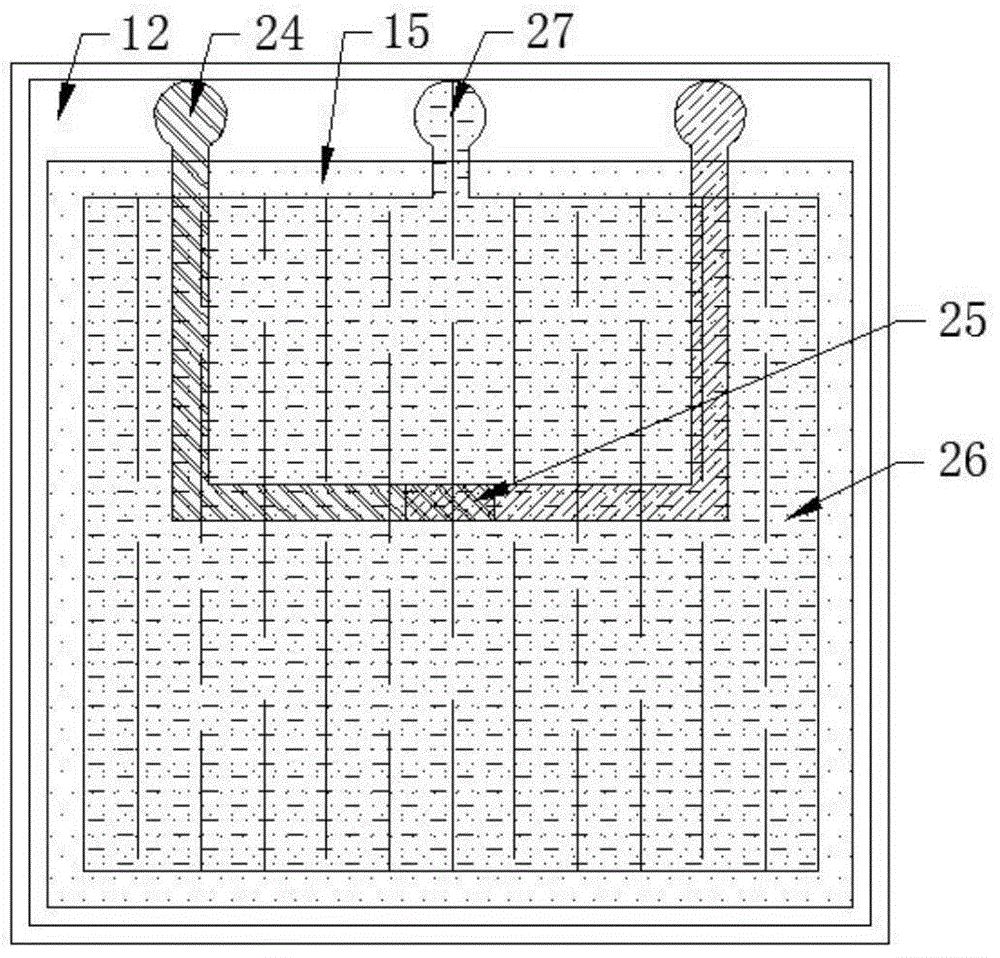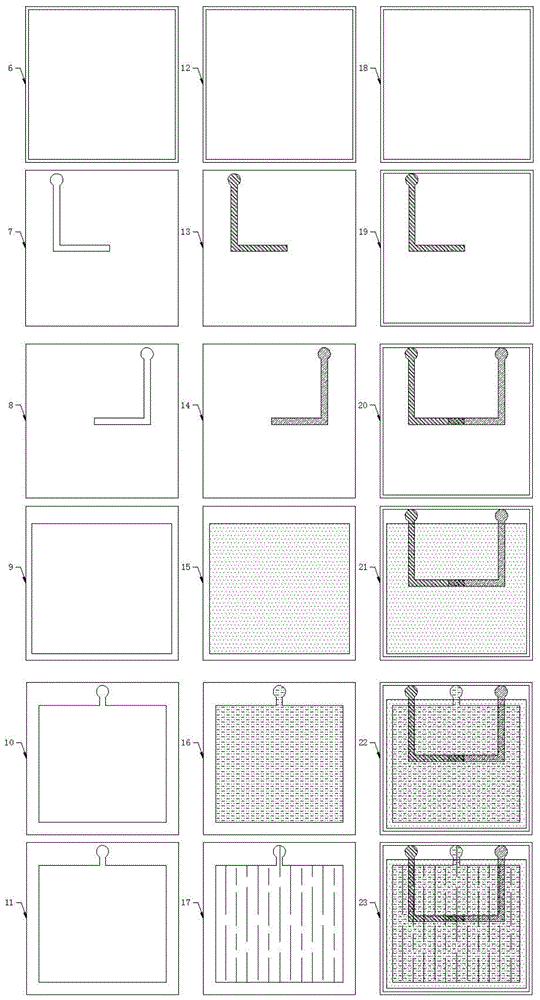Fuel cell internal temperature-current density synchronous measurement sensor
A current density, fuel cell technology, applied in current density measurement, thermometers, thermometers with directly sensitive electrical/magnetic components, etc., can solve the problems of fuel cell performance degradation, complex fabrication, and difficulty in combining temperature measurements , to achieve the effect of reducing performance reduction, convenient production and small size
- Summary
- Abstract
- Description
- Claims
- Application Information
AI Technical Summary
Problems solved by technology
Method used
Image
Examples
Embodiment Construction
[0034] The present invention will be further described below in conjunction with the accompanying drawings.
[0035] refer to figure 1 As shown, the fuel cell internal temperature-current density joint measurement sensor of the present invention includes a fuel cell flow field plate 1, a temperature-current density joint measurement sensor 4, a lead wire 5, and the temperature-current density joint measurement sensor 4 is arranged on the fuel cell flow field. On the ridge 3 between two adjacent flow channels 2 of the field plate 1, one end of the lead wire 5 is connected to the wiring lead-out end of the temperature-current density joint measurement sensor 4, and the other end extends to the edge of the flow field plate for transmitting temperature-current density. The electrical signal generated by the current density joint measurement sensor; when the fuel cell is assembled, the surface of the fuel cell flow field plate 1 where the temperature-current density joint measurement...
PUM
| Property | Measurement | Unit |
|---|---|---|
| Width | aaaaa | aaaaa |
Abstract
Description
Claims
Application Information
 Login to View More
Login to View More - R&D Engineer
- R&D Manager
- IP Professional
- Industry Leading Data Capabilities
- Powerful AI technology
- Patent DNA Extraction
Browse by: Latest US Patents, China's latest patents, Technical Efficacy Thesaurus, Application Domain, Technology Topic, Popular Technical Reports.
© 2024 PatSnap. All rights reserved.Legal|Privacy policy|Modern Slavery Act Transparency Statement|Sitemap|About US| Contact US: help@patsnap.com










